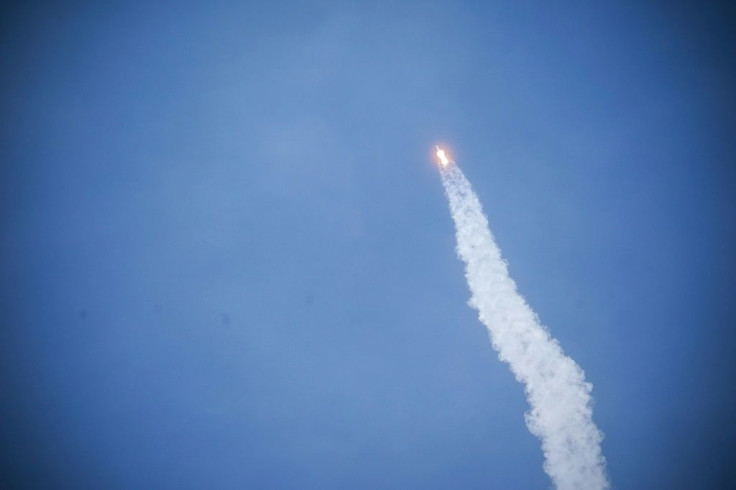A Rocket That Eats Itself: UK Eyes Innovative Launch Technology To Fuel Its Space Ambitions
KEY POINTS
- The U.K. government invested $117,000 in the tech
- Autophage rockets may be used for launching small satellites
- The U.K. aims to secure 10% of the space industry by 2030
The U.K. government is investing in rockets that "eat themselves" up on the way to orbit as it scrambles to gain market share in the global space industry.
The ‘autophage’ rocket engine, developed by researchers from Ukraine and Glasgow University, Scotland, has received funding worth 90,000 pounds, or $117,000, from the Ministry of Defense’s innovation head-hunter Defense & Security Accelerator (DASA).
Autophage rockets, simply put, help to lift satellites into space by burning their own body as fuel. This tech produces enough energy to reach orbit in a smaller launch vehicle. It may help the U.K. claim a part of the global $2.8-billion small-satellite launch market, which at present is dominated by American companies Rocket Lab and SpaceX.
“The specific payloads we are targeting include the small satellites. Presently, it takes a long time to launch these because they need to be grouped for a flight on a larger rocket, which is usually launched from the U.S. or Kazakhstan. The process can take years,” Patrick Harkness, of James Watt School of Engineering, said.
The simplest solution that comes to mind for this problem is to use smaller rockets, but that is difficult because if you scale down a rocket’s size, it also reduces the amount of propellant it can carry. The rocket may not be able to reach orbit.
Autophage rockets burn the propellant and the tanks containing them, which saves excess mass and the vehicle can be miniaturized successfully.
“The body of a hybrid autophage rocket will be a tube of solid fuel, containing liquid oxidizer, which is the propellant. The entire assembly will be consumed from the bottom up, by an engine which will vaporize the fuel tube, add the oxidizer and burn the mixture to create thrust. The engine will have consumed the entire body of the rocket by the time it reaches the orbit when only the payload will be left. It is a mass-efficient process,” Harkness explained.
The university has previously tested autophage rockets with an all-solid propellant. Now, with fresh funding, tests will be carried out for the hybrid propellant, a solid tube of fuel containing a liquid oxidizer.
These rockets may help the U.K. achieve its aim of a 10% share of the space industry by 2030, Harkness said.
The small satellites, usually called CubeSats, are like cubes with sides measuring 10 cm. According to a NASA report from October, 2017, a 3-unit CubeSat costs around $300,000 to launch. Harkness claimed that autophage rockets would be a much cheaper option than normal rockets.




© Copyright IBTimes 2025. All rights reserved.




















